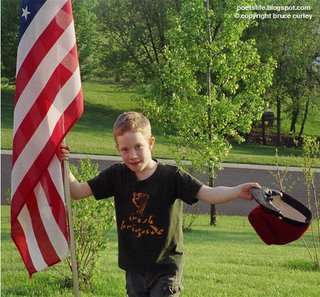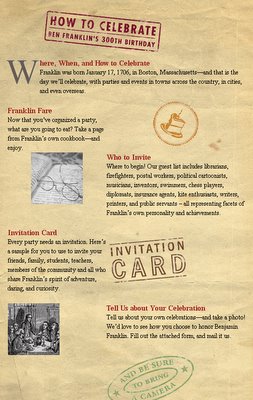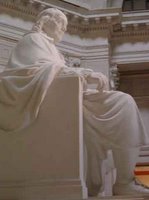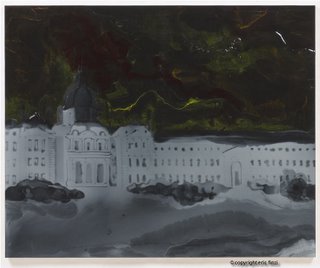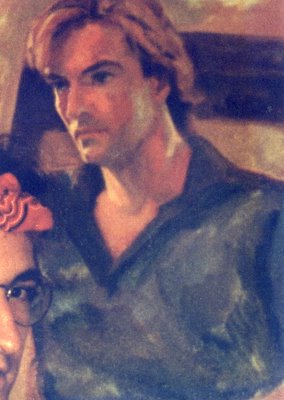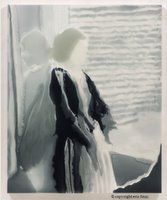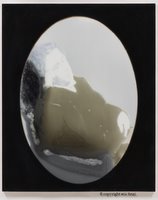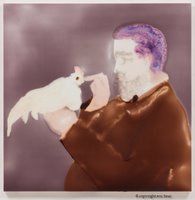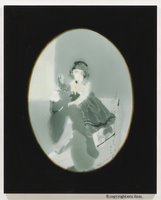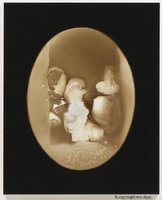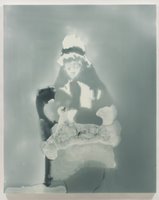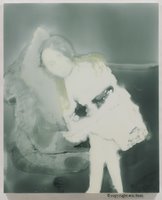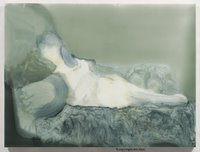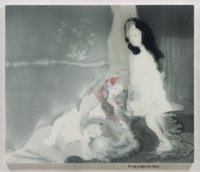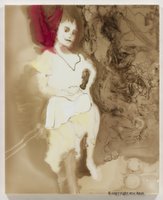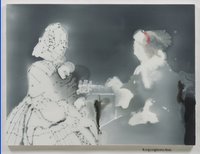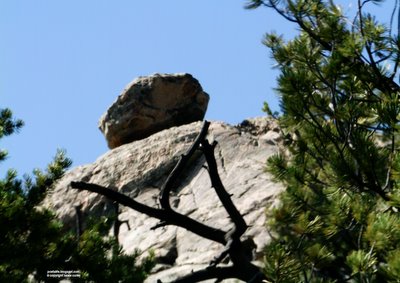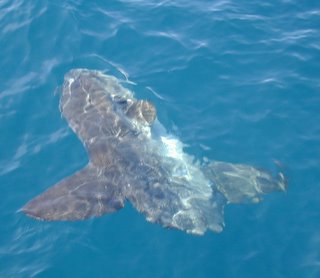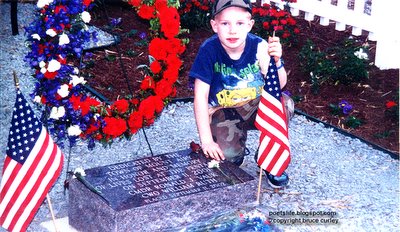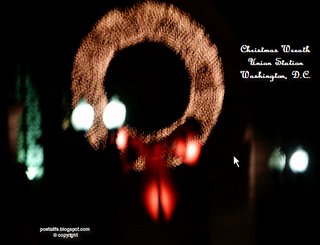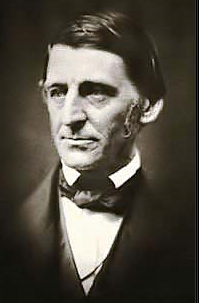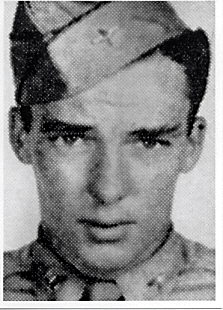Over the next several months, THE WILD GEESE
TODAY will be presenting a most unusual and fascinating document:
The story of an Irishman in colonial South America in the 1600s, written by the
man himself, and hidden away in an archive in Brazil for several hundred years.
It was translated from the original Old Spanish and Portugese by Martin
McDonnell, of Gaithersburg, Maryland, and sent to us by fellow Marylander Bruce
Curley. It is a story of one of the first of what we now call THE WILD GEESE, before the term was actually
even in use. We are certain it will be of great interest to many of our
readers.
Here is Bruce Curley's introduction, followed by the first installment of
the O'Brien Chronicle itself, just as McDonnell translated it. Other
installments of the story are to follow.
I first met Martin
McDonnell in 1989 in Maryland at a silent retreat at St. Mary's. While everyone
else walked around piously reciting rosaries or in silent prayer during breaks,
Martin continued talking, loudly. His speech, squeaky and stilted, intrigued
me. So I got talking to him late one night. I found out he had recently
suffered a massive heart attack and lost a percentage use of motor functions,
including speech, which accounted for the unusual sound of his voice.
As the boats passed across the five-mile wide Chesapeake Bay and we stood on
a bluff, he unraveled a tale he called the O'Brien Chronicle, written by an
Irishman to support his petition to the King of Spain, seeking to regain the land he lost in battle
in the early 1600s.
The chronicler, Bernardo O'Brien, eventually reached what
is now Brazil. But, as you will read, there is far more to the saga. Martin had
translated this nearly 400-year-old story, and 10 years ago was struggling to
tell me that he had seen O'Brien's story, written in O'Brien's own hand, in his
own words. I told Martin I would visit and look at his manuscript. I did, and
O'Brien's story stunned me to silence.
 For many people, Irish history is a country, a party, a flag, a poem, a
series of battles against tyrants, a song, or even a religion. But as The
O'Brien Chronicle demonstrates, Irish history is really the sum of ways in
which Irish men and women have sought to preserve a collective memory against
unbelievable odds. Bernardo O'Brien is an Irishman whose story transcends time
and space.
For many people, Irish history is a country, a party, a flag, a poem, a
series of battles against tyrants, a song, or even a religion. But as The
O'Brien Chronicle demonstrates, Irish history is really the sum of ways in
which Irish men and women have sought to preserve a collective memory against
unbelievable odds. Bernardo O'Brien is an Irishman whose story transcends time
and space.
Martin, then Friar Martin McDonnell and living in Bahia, Brazil, had noticed
little blond-haired, blue-eyed children. Knowing how far and wide the Irish had
been scattered, he went looking for evidence of Irishmen in early Brazil.
Martin had been researching in the national library for a number of years when
he met a nun from New York who told him about an extraordinary narrative in the
library's archives. Martin then pulled and translated the document -- The
O'Brien Chronicle -- which is written in a number of languages and dialects.
Martin's years of work to make this story accessible continues the ancient
tradition of Irishmen preserving the stories that are our history.
Many of the Irish have struggled to pass on their history, despite the best
efforts of the Vikings and, later, the British to obstruct them. Without the
many inventive ways that this story has been preserved by bright, courageous Irishmen
and women -- from the ancient bards who memorized lines, to the hedge priests
-- much of that history would be lost. Like those bygone heroes, Martin has
struggled to give voice to a part of our past. I believe he has received God's
blessing in this quest, ensuring that this piece of Irish history survives. We
are immensely richer for it.
 A special note of thanks must go to Martin's wife, Anne McDonnell, for
refusing to allow the doctors to end life support after Martin suffered his
stroke, going against the advice of her doctors. She is proof of the point made in the book "Cultural Selection" -- that
the woman who shares a man's life is the most important force in determining
whether his creative work lives through the centuries or quickly disappears.
A special note of thanks must go to Martin's wife, Anne McDonnell, for
refusing to allow the doctors to end life support after Martin suffered his
stroke, going against the advice of her doctors. She is proof of the point made in the book "Cultural Selection" -- that
the woman who shares a man's life is the most important force in determining
whether his creative work lives through the centuries or quickly disappears.
Now we have begun a new millennium. And again, long-neglected Irish people
who used a variety of ways to preserve their memory and accomplishments are
coming to light. When asked to explain a poem, Robert Frost said: "What
would you have me do? Explain it in other and less good words?!" Enough
introduction! Here is the story of the O'Brien, "of the house of the Count
of Thomond." God bless him. ... God bless all the brave Irish men and
women and children who continue the struggle.
-- Bruce Curley
THE
O'BRIEN CHRONICLE
BERNARDO O'BRIEN'S BRAZIL
The Brazil that
Bernardo O'Brien visited during the early part of the 17th century was much
less settled than the coastline of North America. Brazil was first discovered
in 1499 by Spanish explorer Vicente Yáñez Pinzón (who could not claim it due to
the Treaty of Tordesillas, 1494). It was claimed in 1500 by Portuguese explorer
Pedro Alvares Cabral, who landed on the far eastern tip of Brazil. Cabral had
had not been searching for land in that direction; he was actually intending to
sail to sourthern Africa.
The Portugese had found that the best way down the
African coast was to sail far out toward the western Atlantic. Cabral had
merely been blown further west than usual and thus struck the coast of Brazil.
Though this was only eight years after Columbus, colonization did not develop
as rapidly in the south as it did in the north. The early years of Brazil's
history is that of Portuguese exploration more so than colonization.
One of the
first valuable commodities the Portuguese began to take home were red and
purple dyes from Brazilian wood, which the Portuguese called pau-brasil,
thus the origin of the country's name.
In early years of European involvement, Brazil was plagued by numerous
groups or marauding bands called bandeiras, who made a living rounding
up Indians for sale as slaves on the few European mines, plantations and farms.
The most effective enemy of these slave traders were Catholic missionaries,
especially those from The Society of Jesus, the Jesuits.
Their Indian
settlements, known as reducciones, were often the safest places for the
native population. It was not until the 1530s that the Portuguese first began
to colonize the coastline of Brazil. By then, other European nations, most
notably the French, were attempting to exploit some of the riches of the
Brazilian coast, as well, and the Portuguese needed to think of solidifying
their claims on the rich natural resources of this emerging area.
By midcentury
the Portuguese had developed a system of political control, with the settlement
of Salvador in the Bahia region as its capital. In 1580, the Portuguese and
Spanish kingdoms were merged under Philip II of Spain. This union would last
until 1640, which encompasses the period leading to and including the time when
Bernardo O'Brien was in Brazil.
These years were marked by increasing conflict
between Philip's combined kingdom and other Europeans, with the English and
Dutch, who were their traditional enemies on the continent, now presenting the
most serious problems.
Though the English had a presence in Brazil, it was by far the Dutch who
would be the biggest thorn in the side of Spanish/Portuguese Brazil. Through
the 1620s and '30s, the Dutch would send many strong forces to Brazil and would
seize large portions of the country at various points. The Dutch would finally
be defeated in Brazil, but not until 1654.
All of these countries will come
into play on the pages of the The O'Brien Chronicle.
O'Brien first comes to Brazil with an English expedition and later is in
contact with the Dutch, Portuguese, Spanish, English, and other Irishmen;
soldiers, explorers and colonists of these countries move through his narrative
at various points.
Like so many Irishmen forced to leave their country and use
their wits to make a new life, O'Brien must keep those wits about him on many
occasions, playing one side off against another in the shifting tides that sweep
him off in one direction and another throughout his narrative.
This then is the Brazil of Bernardo O'Brien's world. A region that is
ostensibly owned by the recently merged Spanish/Portuguese Empire, but one
which is highly coveted by the English and Dutch, who will take it by force, if
possible. It is a dangerous world, indeed, for this son of Erin, a world in
transition, where friend and foe are never certain, but it is a world he seems
highly adept at negotiating.
Part One - To The Amazon
Captain General Sir
Bernard O'Brien del Carpio says that Sir Cornelius O'Brien, his father, being
in Ireland a noble Gentleman of the house of the Count of Thomond, one of the
oldest and most illustrious of that Kingdom, and lord of three estates on which
he had three castles, was imprisoned by the English in the year 1622, and
accused that in the wars of that Kingdom he had taken the side of the
Catholics, and had engaged in service to the Crown of Spain, and they
confiscated his inheritance and property.
At this time, the petitioner, being 17 years of age, was in England, in
London, where there was also an English Gentleman named Sir Henry Roe, who had
been a companion of Sir Francis Drake and of Sir Walter Raleigh, on their
voyages. To whom several Counts, and titled persons of England, with a
commission from King James gave a ship of 200 tons with artillery and
outfittings to follow up the discoveries of Sir Francis and Sir Walter, and set
foot upon and populate on the great river of the Amazon, of whom land news had
been received, and was quite famous as being rich, and of great fertility, and
had not yet been settled by white people.
Sir Henry Roe set forth in this
vessel in the year 1621 with 124 persons, and among them went the supplicant
without telling his relatives or friends, so great was his desire to see
(other) lands and new things.
They arrived at the bank of the Amazon river and, going some 10 leagues,
arrived at the port, and site of the Indians named Sipinipua. They made friends
with them, explaining at first by signs, until they came to understand the
language, which is called Arrua.
They went up the river about another 60
leagues in their ship to a site, which the natives previously called Patavi, and
was later known here as Cocodivae. Here Sir Henry landed 16 persons, 12 Irish
and 4 English, who were servants of the Irish, all Catholics, leaving the
petitioner as Captain and ordering that they preserve the friendship of the
Indians, and sustain themselves there until he sent aid from England or
Ireland, and for this purpose he left with him a great quantity of rosaries,
bracelets, knives, mirrors, spinning tops for boys, whistles, combs, hatchets,
and various other things. This same Sir Henry setting out in his vessel did not
send them aid in three years.

In the interim, the Petitioner soon learned the language of the Indians,
although he had gained their friendship, nevertheless for his safety, as well as
that of the other 15 Christians, he built a wooden fort, surrounded by a cavity
of earth, and for defense kept 40 muskets, powder, munitions and other arms.
Those Indians were obedient to many different masters, whom they called
Bateros, and had among themselves continuous differences and wars.
Their
weapons are swords of wood, hatchets of stone, with wooden handles as thick as
two elbows, bows, and arrows of cane with tips of stone, or bone, or very hard
wood, wooden darts longer than the height of a man, rigged up at the tip like
the arrows, and some with both poison and large wooden rings with four corners.
The petitioner having gone to the aid several times of those on his site and
county with musketry and government would win for them a victory, and thus
earned their devotion and obligated them to himself, so they regarded him with
tobacco and cotton, and gave him native food and drink.
Among the Irish were four good students, and Latins, who endeavored to bring
the knowledge of God to the Indians, who had no religion but adored something
called Numen, which was not even a deity. The Christians persuaded more than
2,000 of them that there was a God, a heaven with rest, and hell with torments
after life.
As the end of the year that the petitioner had been there, with four more of
the Irish, taking five muskets and supplies he went up the Amazon river about
700 leagues by water and land, taking always about 50 armed Indians as guides,
aides, and interpreters from one people to another, and four canoes.
They
reached a land where they saw no men, but many women, which the Indians call
Cuna Atenare, which means "strong women", and the Christians (call)
"Amazons." These bind their right breasts flat like a mans',
artificially, so they will not grow, to enable them to shoot arrows, and the
left (breasts) large, like other women.
|
She sent him three
of the most-prized women she had, and asked him to come speak with her.
|
They are armed like the Indians. Their queen, who is named Cuno Muchu, which
means great woman or lady, was on one of the islands of the river.
The
petitioner sent her in his canoe an Indian woman as ambassador, and with her a
mirror and a shirt from Holland as a present, and sample of the merchandise he
was carrying, and if she liked it, she would speak with him and send a hostage
She sent him three of the most-prized women she had, and asked him to come
speak with her. He did, she asked him if it was he who had sent her the
present, he said yes. She asked him what he wished, he said peace and permission
to pass to her kingdoms and take care of of things there.
She said she would
grant his (petitions), and gave three slaves in exchange for the merchandise.
He made her wear the shirt from Holland, with which she found herself putting
on airs, and at the end of one week, when he had left, promising to return, she
and her subjects indicated that they were sorry to see him go.
The Petitioner went up the river by land, where here were Indians so fierce
that in no way were they pleased about it or disposed to speak to them. Then he
returned down the same river, and then by another river which one flows from
it, and flows through the land called
Harahuca, where there are crystalline stones and other resplendent things
which the Indians regard highly as being a cure for melancholy and illness of
the spleen. They went down this river to the sea of the North, where the river
is called Serenem, from there by land they came to the mouth of the Amazon
river, and from there they returned to their fort at Cocodivae.
About this time, there arrived on the Amazon river a ship from Holland,
whose captain was named Abstan. They sent word asking the Petitioner if he
would mind if they settled nearby, and if he would give them an interpreter to
deal with the Indians, and they would live in friendship, and do things as he
wished.
He answered them that he had 4,000 Indians fighting out of devotion to
him around there and he would have more if he were (attacked) and he intended
(to) preserve the river with them alone, or even expand to more land, therefore
the Dutch should leave. They went from there to the Coropa river near the
conquest of Gran Para, where they began selling the population aid from
Holland, and sending back tobacco and cotton.
 If you want a good Microsoftr PowerPointr (PPT) tutorial, visit the Florida Gulf Coast University PowerPoint Tutorial. You will learn how to: Get Started, Screen Layout and Views, Work with Slides, Add Content, Work with Text, Color Schemes, Graphics, Slide Effects, Master Slides, Saving and Printing, Keyboard Shortcuts, Design Tips, and Presentation Basics. PowerPoint Tutorial is the K to 12 of PPT.
If you want a good Microsoftr PowerPointr (PPT) tutorial, visit the Florida Gulf Coast University PowerPoint Tutorial. You will learn how to: Get Started, Screen Layout and Views, Work with Slides, Add Content, Work with Text, Color Schemes, Graphics, Slide Effects, Master Slides, Saving and Printing, Keyboard Shortcuts, Design Tips, and Presentation Basics. PowerPoint Tutorial is the K to 12 of PPT. visit CrystalGraphics PowerPlugs for PowerPoint for their many plug-ins.
visit CrystalGraphics PowerPlugs for PowerPoint for their many plug-ins.
